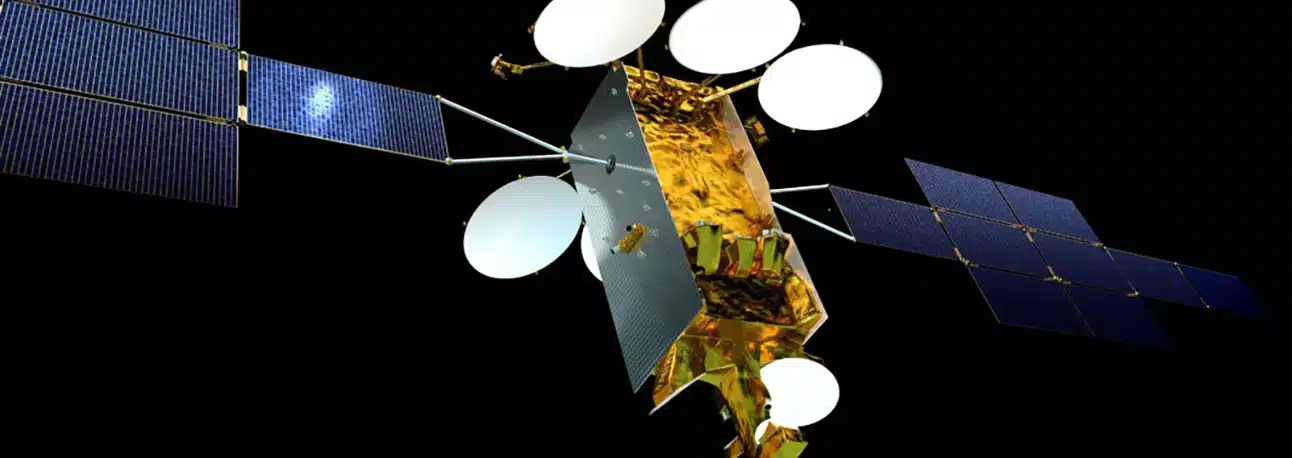
The design of software-defined satellites (SDS) introduces unprecedented capabilities and flexibility; advancements which enable satellite operators to deliver enhanced services tailored to user demands, optimizing capacity utilization by deploying resources effectively at the right time and location. This means that service providers can deliver better services, precisely where the demand exists.
To deliver these services effectively three elements must be prioritized.
A flexible and scalable ground platform
Firstly, it’s essential to have a ground platform that is both flexible and scalable to meet the needs of software-defined satellites. These satellites offer tremendous flexibility, serving anywhere from 50 to 500 spot beams. Therefore, the solution must not only scale in the number of spot beams and carriers, but also in gigahertz and gigabits, ensuring satellite operators and service providers can serve their customers in the most effective way.
Tailored bandwidth management
Secondly, as these systems become more complex and challenging to manage, there will be a growing need for better resource or bandwidth management tools that can be tailored to the required go-to-market strategy.
As such, providers must enable customers down the value chain to facilitate end-user services while simultaneously providing them with the flexibility to tailor to add additional value. More options are also required to address needs along the value chain, allowing for virtual network operators or resellers to define services more flexibly, including the delivery of wholesale bandwidth, enabling them to create their own services.
Optimizing resources
The third element focuses on optimizing resources in both space and on the ground. Resource orchestration becomes a key component here. By implementing a resource orchestration solution, operators can align space resources with those of the ground segment, tailoring services to meet exact customer demands. This combination allows operators to maximize addressable markets, whether in fixed or mobility services, enhance sellable capacity, and strengthen their business case.
The role of Intuition
The rise of software-defined satellites and multi-orbit operations has created demand for ground-segment networks that excel in scalability, cost-efficiency, and rapid deployment.
With the introduction of our Intuition ground system, satellite operators and service providers can easily scale services to maximize the value of their satellite investments.
Intuition is oriented around five capabilities: virtualization to support fast, cost-effective scaling of services; multi-orbit support to deliver services for a variety of satcom applications, regardless of orbit; standards-based network convergence to integrate satellite networks seamlessly into the global communications domain; end-to-end orchestration to dynamically adjust resource and service allocation in response to variable demand; and flexible go-to-market strategies to reach more customers with the widest possible range of business models.
As it relates to harnessing that flexibility from SDS on the ground, Intuition’s innovation around virtualization and orchestration plays a key role. With its cloud-native architecture, Intuition enables faster deployments on a larger scale across more locations, with the flexibility to adapt to market needs.
Virtualized hub deployment models
Since the exact number of spot beams and carriers needed is often unknown upfront, virtualization of our network and hub baseband processing facilitates on-the-fly configuration in tandem with resource management. That’s where Intuition’s architecture allows for various deployment models, including private cloud, public cloud and hybrid models. A hybrid cloud environment often makes sense, utilizing a private cloud for regular operations while employing public cloud services for occasional needs or disaster recovery scenarios where cost is a lesser concern.
Where total cost of ownership (TCO) is a concern, there is also an additional deployment consideration: high density, purpose built modular appliances, the Intuition XBB. The highly compact and modular hub baseband appliance that fits within our next-generation DCR/DBR hub infrastructure provides maximum flexibility and scalability for various on-prem deployment architectures.
With access to multiple deployment solutions, satellite operators and service providers have the freedom to balance the need for flexibility and scalability with TCO.
Flexible resource orchestration
Resource orchestration allows satellite operators to operate a dynamic and efficient global network.
With tools at their hand for payload configuration management, dynamic resource management, gateway switching and seamless service transition, operators are able to manage their satellite resources across a load-balanced network, demonstrating flexibility and effectiveness across space and ground segments.
With Resource Orchestration APIs Intuition enables operators to autonomously adapt resource assignments in near real-time and apply mitigation strategies to help alleviate congestion by reallocating terminals and resources across beams and satellites, working to bridge the gaps between the space and ground segments.
The future of SDS
Looking ahead, the transition to a virtualized cloud-native architecture with orchestration positions software-defined satellites for future success.
By focusing on flexible deployment scenarios, advanced management tools, and resource orchestration, satellite operators have the best tools with Intuition to unlock the potential of Software-defined Satellites with new levels of performance and service delivery.
Will you be attending #APSCC November 5-7? Book a Meeting with our SDS expert, Jo De Loor, VP Market Growth & Strategy.
